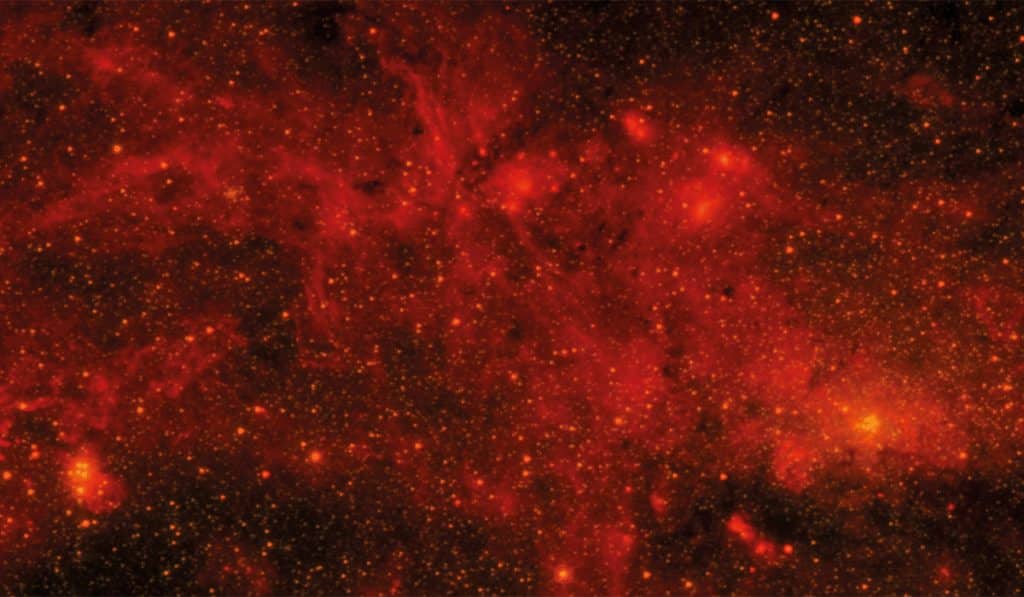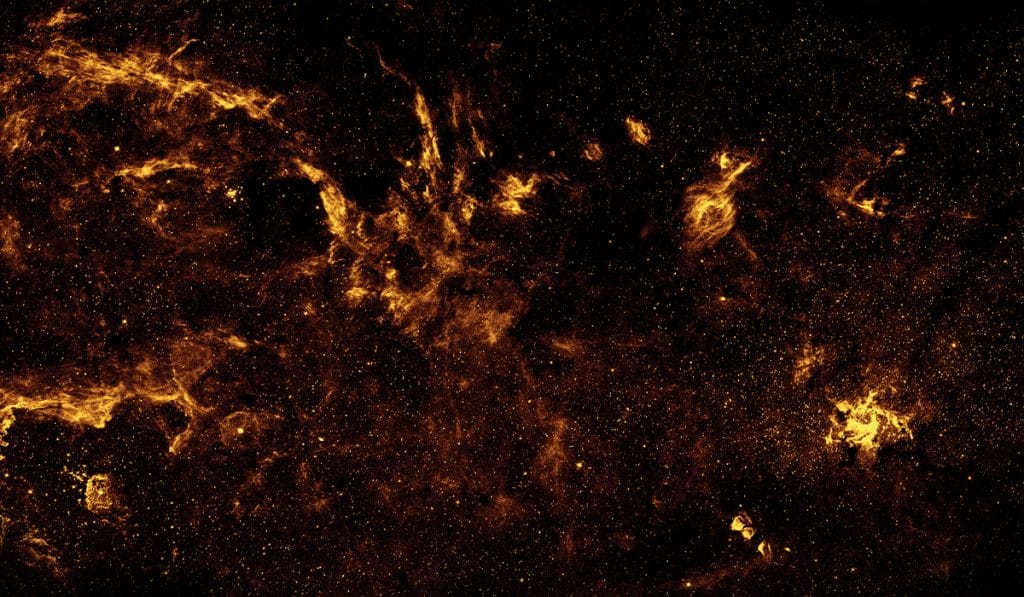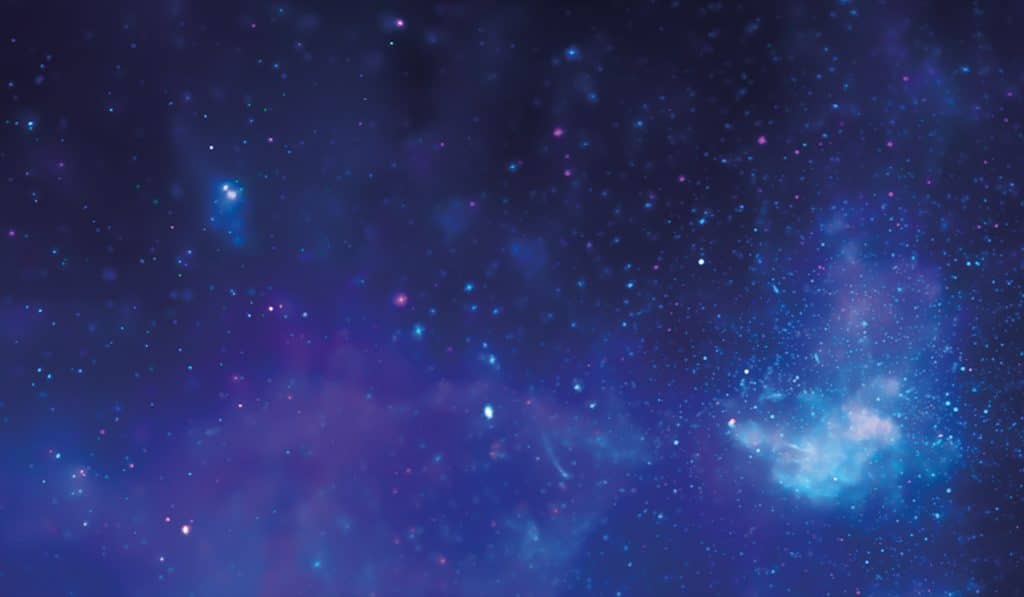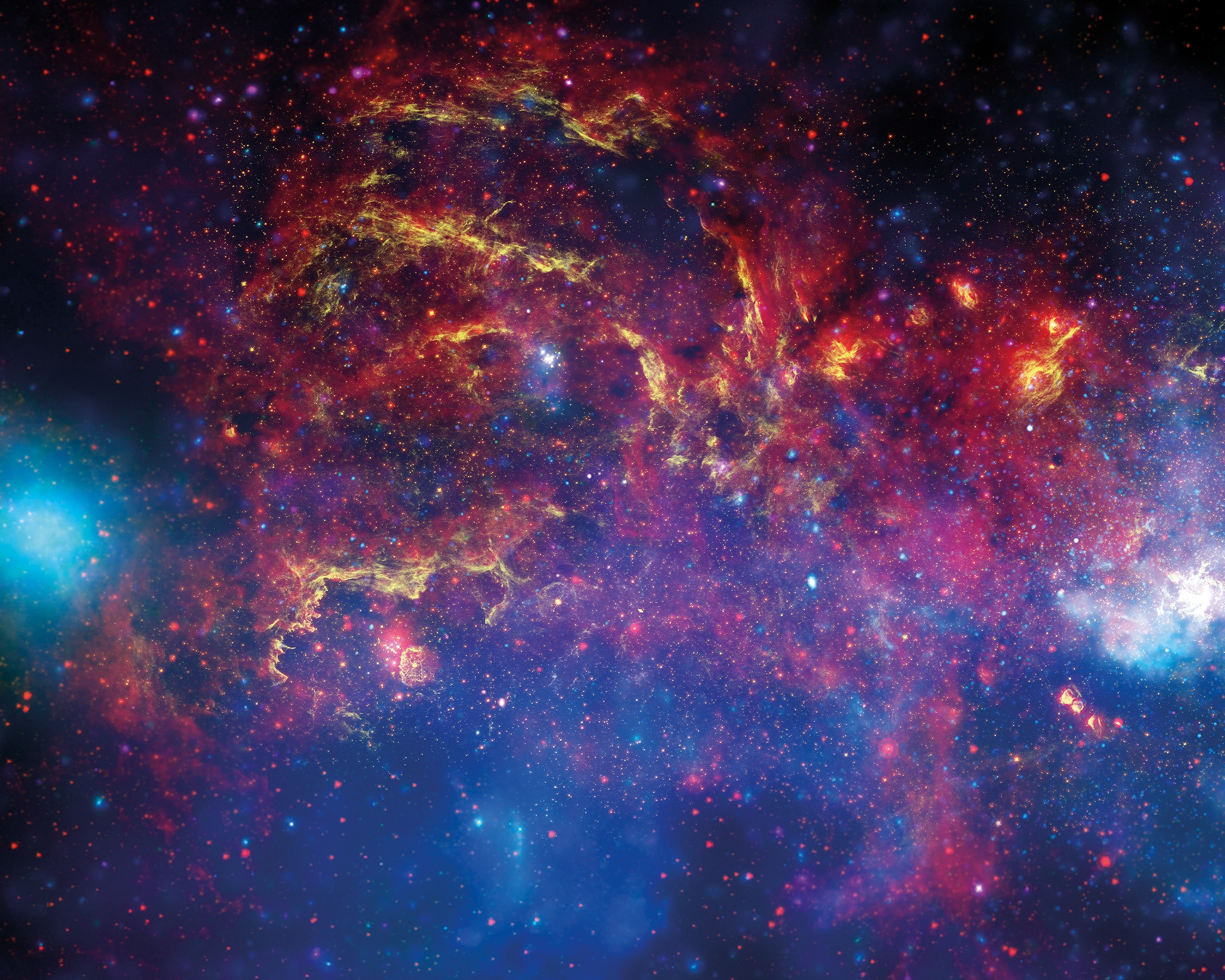Combined, three different kinds of lights reveal a spectacular view of the centre of the Milky Way.
This view of the centre of the Milky Way galaxy is a composite image from three of NASA’s observatories. The red represents infrared light captured by the Spitzer Space Telescope. The yellow and orange is optical and near-infrared light captured by the Hubble Space Telescope. The blue and purple/ pink represents X-ray light captured by the Chandra X-Ray Observatory.
Together they illustrate much more than we can see as visible light and highlight some interesting phenomena in a region of space about 25 000 light years from Earth. The bright cyan spot on the’ left is an X-ray binary star, comprising a pair of stars that orbit each other and emit X-ray. radiation. There are at least a dozen in this area of the galaxy near the supermassive black hole Sagittarius A*, which is the bright white spot on the opposite page. Between the two, towards the top, are arched filaments. Not much is known about filaments, which were first discovered by astrophysicist Farhad Yusef-Zadeh and his colleagues in the 1980s, except that they tend to appear in pairs or clusters, are made of synchrotron radiation; and have or are in an incredibly strong magnetic field.’



This picture was created in 2009 in celebration of the International Year of Astronomy and the three original images were printed as a poster as part of the evert. The composite image was also the inspiration for the-Galactic Center Sonification, one of the first results of NASA’s A Universe of Sound data sonification project, as well as Sophie Kastner’s composition “Where Parallel Lines Converge”.
By: Mandy J Watson
Imagery: NASA/Jpl-Cartech/ESA/CXC/STSCI







